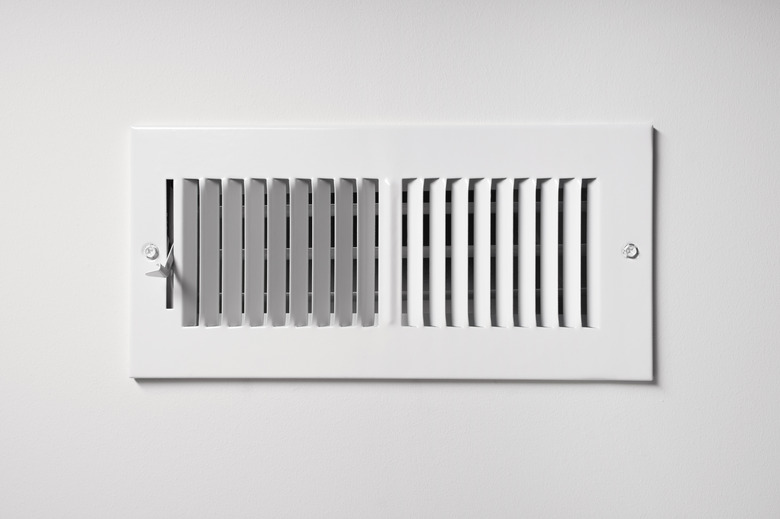How To Open And Close Ceiling Air Vents
We may receive a commission on purchases made from links.
Opening and closing the HVAC vents in your home is incredibly easy — perhaps too easy. Most vents have a lever or dial that you can adjust to open or close them. Doing so is smart if, for example, your central air has a ducting system completely separate from your furnace. This often happens in older homes where central air was added later. In this case, it makes sense to block winter drafts by closing the air conditioning vents.
Most of the time, however, the best thing you can do is open your air vents and then leave them alone. There is a popular and pervasive myth that you can save money on heating and cooling by closing off certain air vents in your home. The theory is that if you have a room in your house you don't use often, closing the vents to that room will save you money. Another version of the myth is that you can alternatively close the door to the room and accomplish the same thing. These practices can ultimately cost you more, however, and they demonstrate a poor understanding of how HVAC systems work.
HVAC Airflow Basics
HVAC Airflow Basics
Designed as closed systems, HVAC setups come in different sizes. When the system is installed, a technician calculates the square footage of your home and plans accordingly. He will then choose a blower motor strong enough to circulate air through your home efficiently and effectively. A properly sized installation will provide enough force and air pressure to circulate air throughout your home and then use an air return to recycle that air, bringing it back into the HVAC loop.
Pressure and Air Vents
Pressure and Air Vents
When closing certain air vents, homeowners often think they're saving money. After all, why pay to heat or cool a room you never use? Unfortunately, closing vents to unused rooms will actually cost you more because of air pressure. Closing the door to an unused room ultimately has the same effect.
When you close a vent, what you are really doing is blocking airflow and increasing the air pressure in your HVAC system. In most homes, HVAC ducts are imperfect and will easily leak if the pressure in the system gets too high. These leaks happen anywhere there is a joint or weak point in the ducting system. This means your cool or warm air is blowing into areas where it won't ever reach you to keep you comfortable.
Even if you have a new HVAC system with perfect seams and no air leaks, an increase of pressure in your system is still a problem. As the pressure in the system increases, your blower motor must work harder and run more often to push the air through the system. This leads to longer run times that increase your energy bill.
Exceptions to the Rule
Exceptions to the Rule
Although it's best to leave your vents open most of the time, there are exceptions to the rule. One is with your air return vents. Some houses only have one, but some have two. If you have two, the one on the upper floor of the house is for your air conditioning. Warm air rises, and as it does, you want to pull it out of your home and back into the air conditioner, where it is cooled again and recycled.
The opposite is true for the heater. The cold air return for the heater should be on the first floor of the home. That way, cold air can be drawn back into the heating system as it sinks and rewarmed to keep you comfortable. While it's usually best to leave your vents open, you can close whichever air return you don't need based on whether it's heating or cooling season.
If your air conditioning and heating systems are two completely different entities, you can also close the vents to whichever system you aren't currently using. Again, because cold air sinks, the vents that deliver conditioned air will typically sit high on your walls or in your ceiling. You'll find vents that deliver warmed air near the floor.
Note too that some vents allow you to direct airflow. Unlike the levers used to open and close the vents, adjusting these levers lets you point the air coming out of your vents in a specific direction. Adjusting these is perfectly fine since they direct airflow rather than minimizing or blocking it.
